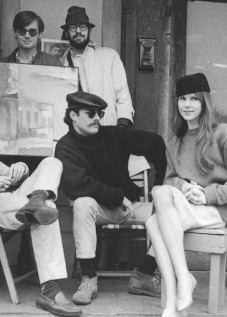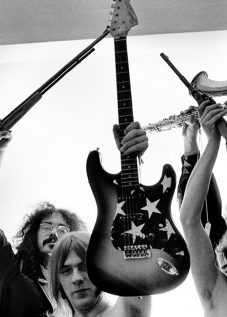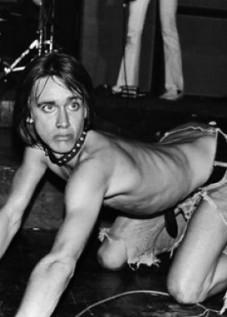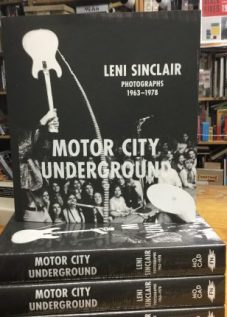The New Sound of Sound by Magdalene Sinclair
Very soon now Wayne State University will finally become known across the country–Not for its football team (I hope that will never happen) or for its student sit-ins (unfortunately that will never happen either), but for its fine presentations of contemporary music sponsored by a small group of students known as the WSU Artists‘ Society. Formed only 5 months ago, this group has already presented a total of 7 concerts of they new music, plus two readings by young Detroit poets. Their most ambitious and most successful project so far was a three day festival of avant-garde music on November 18, 19, and 20. By successful, I don’t mean that the Artist’s Society, the “promoter,” made a lot of money on it. They didn’t make any money on the concert. Admission was only 50 cents per concert or $1 for the whole festival. What ‘little was made was devoled among the 36 or so musicians who participated in the festival, who in turn, donated their share to the Artist’s Workshop. Between 500 and 600 people attended the festival, a sign that people are finally catching on to the fact that “something is happening here.”
The first concert, “Psychedelic Guitars,” did not quite do Justice to what proved to be its somewhat pretentious title. When I was asked by people before the concert, “What in the world are ‘psychedelic guitars?‘ I just told them to listen to the concert and to listen to the music. That was too bad. These are musicians who’ve had to play commercial folk-music in coffee-houses for a long time to make a living. But privately, at home, they have been experimenting with new forms and creating new sounds on their instruments, never heard before in Western music. People who are interested in this new guitar music should listen to Sandy Bull (accompanied by Billy Higgins on drums) or to Blind Joe Death [John Fahey].
In this festival, these musicians were given the chance to play this music before a large, open-minded audience—and for the most part, didn’t take it. They had to show the audience they could sing as well as play the guitar like everybody else. It’s not that I didn’t like Jerry Lewis’ rendition of Bob Dylan’s “Masters of War,” Ted Lucas’ blues, Larry and Carol Miller’s songs, or Dick Keelan’s “Cold Water Blues” or his sneak preview of a tune written for Ted Lucas’ new folk band: The Spike-Drivers. The audience certainly seemed to enjoy every minute of it. The response was the greatest when the musicians finally played what they were supposed to play all along: psychedelic music (music that expands your consciousness, that moves your mind out, etc.,).
The second program was a concert of electronic music and electronic poetry by Joe Mulkey and HenryMalone held at the new Artists‘ Workshop. The whole concert was well planned and very enjoyable. Joe Mulkey led the audience through a “sound–museum” and presented a piano concerto (on the whole piano, not just on the key board); Henry Malone played compositions he wants the audience to understand as poems (like his “War Poemes”). I like this kind of electronic music better than other kinds I’ve heard where up to 90% is silence. Here were still recognizable sounds; a baby crying, a car running, bits of music. Mulkey and Malone do not mean to shock the audience. They seem to move them wherever the composition leads them.
The third concert, like the first one in the Lower DeRoy Auditorium at Wayne, was given to ‘Black Music.’ This concert was a show case for the new music that has been building for the last year or so in Detroit. The sheer bulk of it is impressive: four bands and 21 musicians.
The second half of the program started out with what was a big surprise to most of the people there: The New Blues Band, neo-rhythm and blues band made up of Moore, Miles, George Garnett, Woodard, Stan Cowell, Ronald Johnson, and featuring guitarist Ron English and vocalsit John Sinclair. Announcing the first tune, Joe Turner’s 1954 version of the old folk standard, “Shake, Rattle & Boll,” Sinclair told the audience, “You can dance in the aisles if you wanna, but you got to do the chicken.”
The Detroit Contemporary 5 provided a climax to the concert with their improvisations on Eric Dolphy’s theme “Gazzelloni” and Moore’s “Stan,” a piece written in 7/8 meter which reiterates the pulsing rhythm under the soloists-throughout the piece. This band was already well known to most of the audience from its previous concerts at Wayne and
from its work at the Artist’s Workshop, where it serves as house-band for the Sunday afternoon events. After rehearsing all week and playing all night, the musicians did not have energy enough left to give their usual intense performance, and after the two
improvisations, Moore turned to his audience, those that were still left at 11:30, and said, “That is it—1et’s go home.”
–Source: Magdalene [Leni] Sinclair The Fifth Estate Issue #2, December 3-December 16, 1965
Tags: Avant-garde, Fifth Estate, Leni Sinclair, Reviews






